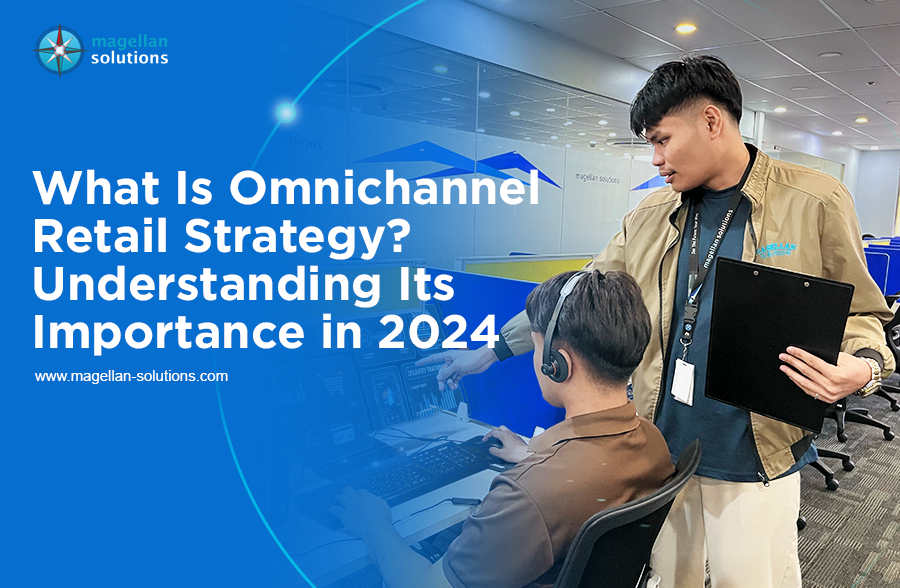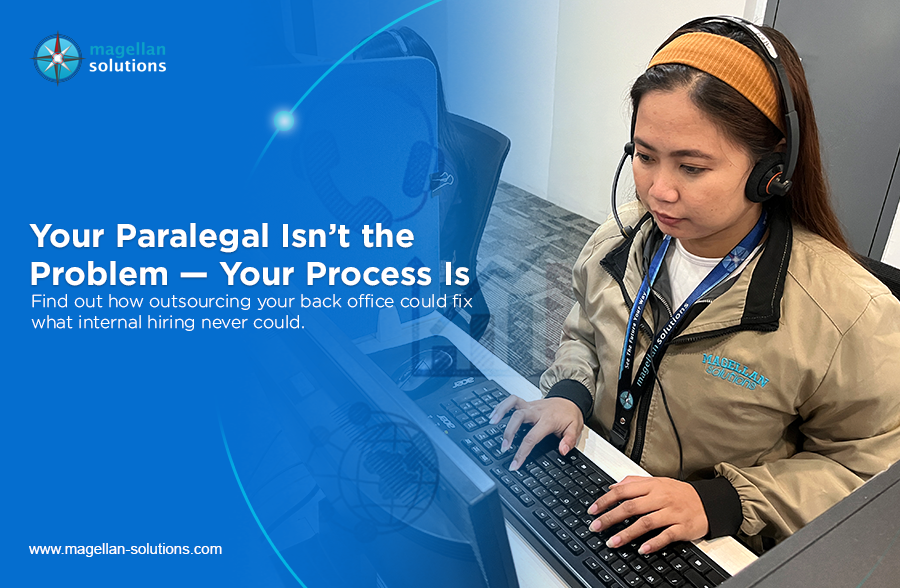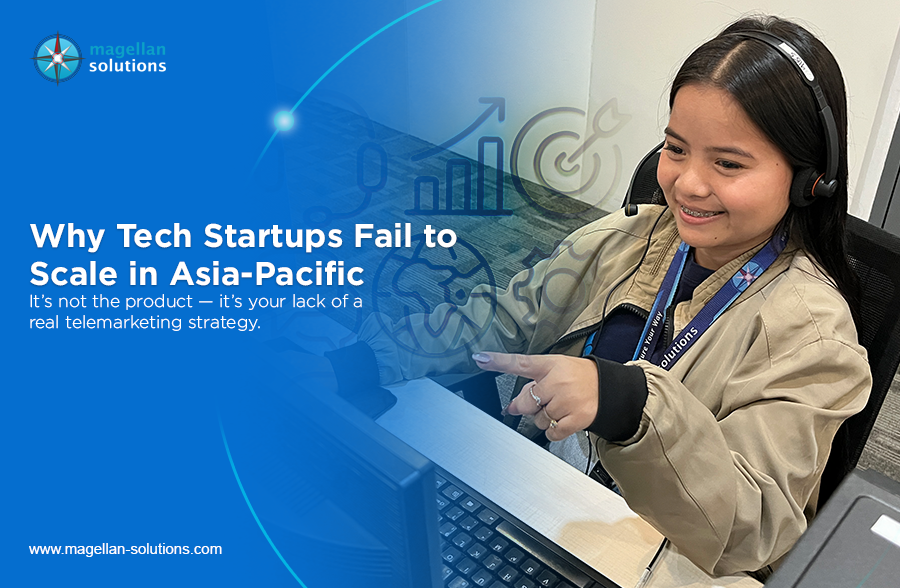Schedule a FREE call with our outsourcing expert now and get a precise quotation that meets your requirements. Don't wait - get started today!
You’re browsing a cozy online store, find the perfect pair of jeans, and try them at your nearest brick-and-mortar store. No hassle, no waiting in line. That’s the magic of omnichannel retail strategy. For small and medium-sized businesses (SMEs), embracing this integrated approach isn’t just a trend; it’s a survival strategy to stay competitive.
In 2024, customers who shop using online and offline channels will likely spend 30% more than those who shop using just one channel. Even though 75% of purchases still happen in physical stores, people often research products online before buying. They might order online but prefer to pick up the item in-store if it’s nearby, avoiding long delivery times.
Ensuring your online shopping experience matches the in-store experience helps you keep customers who might otherwise leave because of confusion or inconsistency. By connecting your online and offline channels well, you can meet and exceed customer expectations, providing a smooth path from browsing online to buying in-store. In this guide, we’ll answer What Is Omnichannel Retail Strategy? and explain why it’s important for SMEs and how to use it to improve sales.
What Is Omnichannel Retail Strategy?
An omnichannel retail strategy integrates various shopping channels to create a unified customer experience. This means that regardless of whether customers shop online or in-store, they encounter a consistent and connected experience. The goal is to link online and offline interactions, providing customers flexibility and continuity in their shopping journey. This omnichannel approach ensures that all digital or physical touchpoints work together seamlessly.
Why Omnichannel Retailing Matters for SMEs in 2024
SMEs need an omnichannel approach to stay competitive and meet changing customer expectations. This strategy helps businesses connect with customers across multiple channels and stand out in a crowded market.
-
Meeting Customer Expectations
Today’s customers expect a seamless experience across all platforms. They want the convenience of shopping online and the option to visit a physical store. For SMEs, this means adopting an omnichannel approach to meet these expectations. Providing a consistent experience across all channels helps build customer trust and satisfaction.
-
Enhancing Customer Engagement
Customer engagement is critical for driving sales and building brand loyalty. An omnichannel strategy allows SMEs to interact with customers across multiple touchpoints. Using data from different channels, you can personalize experiences, tailor marketing efforts, and increase customer engagement, leading to higher retention rates and repeat business.
-
Improving Customer Service
An effective omnichannel strategy can significantly enhance customer service. It ensures that customers receive consistent support whether they reach out via social media, email, or in-store. For SMEs, this means being responsive to customer inquiries and resolving issues efficiently, contributing to higher customer satisfaction.
Key Components of an Omnichannel Retail Strategy
To effectively implement an omnichannel retail strategy, it’s essential to understand the key components of this approach and how they work together to create a seamless customer experience.
1. Integration of Online and Offline Channels
For SMEs, integrating online and offline channels is crucial. This ensures that inventory, pricing, and promotions are consistent across all platforms. For example, if a customer sees a product on your website, they should be able to find the same item at your brick-and-mortar store, and vice versa. This consistency helps prevent customer frustration and builds confidence in your brand.
2. Unified Customer Experience
Creating a unified customer experience involves having a single view of customer interactions. This means gathering and analyzing data from both online and offline sources to provide personalized recommendations and offers. This approach helps SMEs understand customer preferences and deliver targeted experiences that drive sales.
3. Data Synchronization
Data synchronization is essential for a successful omnichannel approach. SMEs must ensure that inventory levels, sales data, and customer interactions are accurately updated across all channels. This prevents issues such as overselling products or providing incorrect information to customers, which can negatively impact their experience.
Benefits of Omnichannel Retail Strategy for SMEs
Embracing an omnichannel retail strategy offers numerous advantages for SMEs, from increasing customer loyalty to boosting sales, all while streamlining operations and enhancing overall efficiency. Here are the other benefits:
-
Increased Sales Opportunities
An omnichannel strategy opens up additional sales opportunities for SMEs. By offering a cohesive experience across various channels, you can attract more customers and drive higher sales. Research shows that customers interacting with a brand through multiple channels are more likely to purchase, significantly boosting your revenue.
-
Enhanced Brand Loyalty
Customers with positive experiences and an omnichannel approach will likely remain loyal to your brand. By delivering a consistent and personalized experience, SMEs can build stronger customer relationships, foster loyalty, and encourage repeat business.
-
Improved Operational Efficiency
Implementing an omnichannel strategy can lead to greater operational efficiency. SMEs can streamline inventory management, order fulfillment, and customer service by integrating various systems and processes. This efficiency helps reduce errors, cut costs, and provide customers with better service.
How SMEs Can Implement an Omnichannel Retail Strategy
Successfully integrating an omnichannel retail strategy involves several practical steps SMEs can take to align their online and offline channels, ensuring a consistent and engaging customer journey.
1. Assess Your Current Channels
Start by evaluating your existing channels and how they perform. Identify any gaps or inconsistencies in your online and offline operations. This assessment will help you understand where improvements are needed and how to integrate your channels effectively.
2. Focus on Customer Needs
Understanding your customers’ preferences and behaviors is a top priority. Use customer data to create a strategy that meets their needs and expectations. Personalize interactions based on past purchases and preferences to enhance engagement and satisfaction.
3. Invest in the Right Technology
Technology plays a key role in implementing an omnichannel strategy. Invest in tools that enable seamless integration between online and offline channels. This includes inventory management systems, customer relationship management (CRM) software, and data analytics tools that help you manage and analyze customer interactions.
4. Train Your Team
Ensure your team is well-prepared for an omnichannel approach. Provide effective training on using the technology and systems and delivering consistent customer service across all channels. A knowledgeable team will help in maintaining a unified customer experience.
Seamless Omnichannel Success Starts with Magellan Solutions!
For SMEs, adopting an omnichannel retail strategy is a powerful way to enhance customer experience, increase sales, and improve operational efficiency. By understanding what omnichannel retail strategy is and how it works, you can better meet customer expectations, boost engagement, and strengthen your brand.
If you don’t know where to start or still have questions about an omnichannel retail strategy, Magellan Solutions is here to guide you. We specialize in implementing effective omnichannel strategies that seamlessly integrate your online and offline channels. Our team will work with you to create a customized plan that fits your business needs, ensuring a smooth transition and maximizing the impact of your retail strategy.
To learn more about how we can implement this plan, call us now for a free consultation.
















